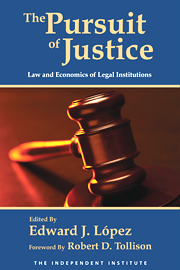Shortly before wildfires such as the Camp and Woolsey fires ravaged Northern and Southern California, respectively, Gov. Jerry Brown signed a contentious bill making it easier for the state’s investor-owned utilities—primarily, Pacific Gas & Electric, Southern California Edison and San Diego Gas and Electric—to recover wildfire costs from ratepayers, but don’t expect the flames to die down anytime soon.
The legislation arose out of the calamitous wildfires the state has experienced the past couple of years and utilities’ fears about their abilities to cover potentially billions of dollars in damages. PG&E faces a possible $15 billion liability for wildfires that wreaked havoc on Northern California’s wine country last year, and contends that it might be forced into bankruptcy if the California Public Utilities Commission does not allow it to cover the costs with rate increases on consumers.Senate Bill 901, authored by state Sen. Bill Dodd (D-Napa), largely sidestepped the broader reforms Gov. Brown had sought to reduce liability exposure for the utilities.
California law is unusual in that utilities may be held liable for fire damage caused by their equipment even if they were not negligent in maintaining it and followed all safety rules (such as wind blowing a tree down onto power lines and sparking a blaze). SB 901 did, however, direct the CPUC to consider PG&E’s financial status in deciding its liability for the 2017 fires, and may allow the company to pass along costs it cannot financially bear (however that is determined) in the form of bonds to be paid by ratepayers over time.
The legislation also requires utilities to beef up protections of their equipment, and provides some much-needed relaxing of logging restrictions on private land. A greater focus on wildfire prevention efforts such as removing excess fuel through vegetation clearing and controlled burns is also long overdue, and will be funded to the tune of $200 million a year for five years from the state’s cap-and-trade fund. Environmental policies preventing thinning to keep forests in a “natural” state, as well as drought conditions and a bark beetle infestation that have killed millions of trees, have created tinderbox conditions and significantly exacerbated wildfire damage. The money would go a lot farther, though, if the forest-thinning services were competitively bid instead of just doled out to Cal Fire.
In fact, privatization of wildfire services in general would likely substantially reduce costs. Approximately 40 percent of all wildfire services are already provided by the private sector, according to the National Wildfire Suppression Association, which represents more than 250 companies in 27 states employing about 10,000 private firefighters and support personnel.
The state should also stop interfering in insurance markets. An August study prepared for the California Natural Resources Agency by the RAND Corporation and Greenware Tech noted that insurers complain that the California Department of Insurance prevents them from using probabilistic wildfire models to project future losses and has not allowed them to raise homeowners insurance rates high enough to cover the full risk-based cost of policies in high-risk areas, which would discourage building in the most fire-prone locations.
Despite the significant risk to which it exposes investor-owned utilities in the state, strict liability is probably appropriate under the existing regulatory system. It is the same compensatory standard to which governmental agencies are held, and, as the state courts have noted, the eminent domain powers granted to electric utility companies under the Public Utilities Code and the government-protected monopolies under which they operate make them more akin to public agencies than unfettered private companies. Under such a system, where utilities face no competition and property owners cannot opt out if they are targeted for eminent domain action, it makes sense to spread the costs of wildfires among the utilities and their customers, who all share the benefits of the utilities’ electricity generation and transmission infrastructure.
That said, the existing regulatory system is at fault for creating “too big to fail” regional utility monopolies in the first place. A central planning commission that grants monopoly rights and dictates prices and “acceptable” profit levels sounds more characteristic of a socialist or totalitarian state like North Korea or the Soviet Union, but that is the state of energy markets in California.
A better solution would be to open up competition by eliminating regional government-granted energy monopolies with eminent domain powers and treating the provision of electricity like other goods and services. Fully privatizing the energy and insurance markets and eliminating government monopoly protections would do much more to reduce energy costs, increase innovation and reduce losses from wildfire damage than any measures currently being discussed in Sacramento.









